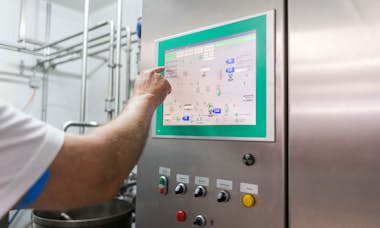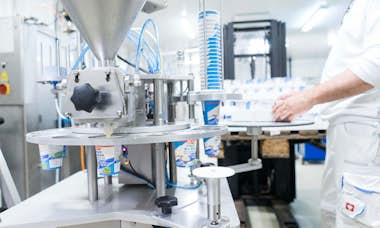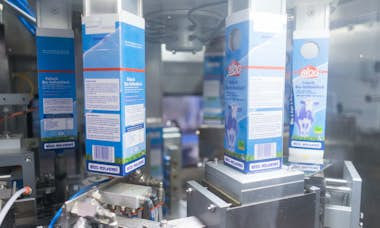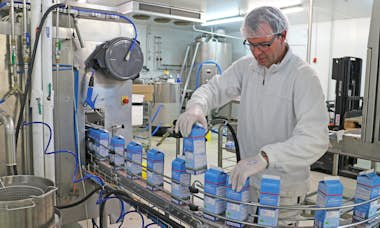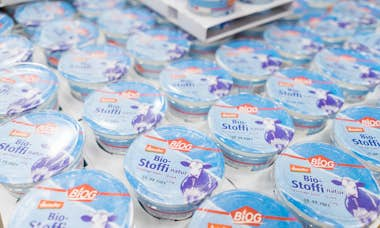About us
With the Biog dairy in Käerjeng, the dream of the organic farmers' cooperative in Luxembourg (Biog) came true in 2015. Here, up to three million litres of organic milk can be bottled or processed into high-quality dairy products every year.
Organic, fair and associative
The milk comes from Luxembourg organic farms, which together as Biog members want to help shape the future of organic farming in Luxembourg. The Biog dairy enables the milk produced by Biog members to be processed and marketed locally as far as possible. With each new BIOG dairy product, it thus fulfils its purpose: to produce regional, sustainable and healthy organic dairy products for our customers.
Regional products
In addition to the values practised in organic farming, such as fair treatment of animals and nature, social considerations also play an important role. We attach great importance to the fairest possible prices for the work of all those involved and to fair cooperation on all sides - from the dairy farmer to the processor and trader to the end customer. Active exchange among the participants in the value chain is one means of achieving these goals. The "fair&associative" logo certifies precisely this associative cooperation between all the players involved in the value chain for our products.
Like all Biog dairy farmers, the Biog dairy is certified by the "Vereenegung fir Bio-Landwirtschaft Lëtzebuerg asbl" and therefore bears the "Bio-Lëtzebuerg" logo in addition to the European organic logo.
Doing the maths - recording farm sustainability performance
We want to achieve this goal with the help of the pilot project of Christian Hiß and the experts of Regionalwert Leistungen GmbH. In December 2021, our eleven dairy farmers of the Biog dairy became the first farmers in Luxembourg to start carrying out the Regionalwert performance calculation and sustainability analysis. The online tool determines for each individual farm in monetary terms what the farmer contributes to the common good without being remunerated accordingly.
These values are calculated on the basis of about 300 key figures that were developed based on scientific findings in cooperation with farmers and stakeholders from society. The participatory exchange results in value proposals that can be flexibly adapted to new developments or country differences over time. The indicators measure sustainability performance in the three areas of ecology, social affairs and regional economy - among other things, questions are asked about biodiversity, expertise or climate.
The result then serves as a benchmark for farmers to orientate their business. The analysis uses five colour levels to illustrate where there is still potential for improvement and which key figures already show a high degree of sustainability. In parallel, we are working together to make it clear to the actors involved in the value chain and to politicians that "this method is suitable for allocating the compensation payments of the Common Agricultural Policy (CAP) in a performance-oriented manner. With the financial resources already available, the transformation of European agriculture could be financed in this way," says Christian Hiß.


